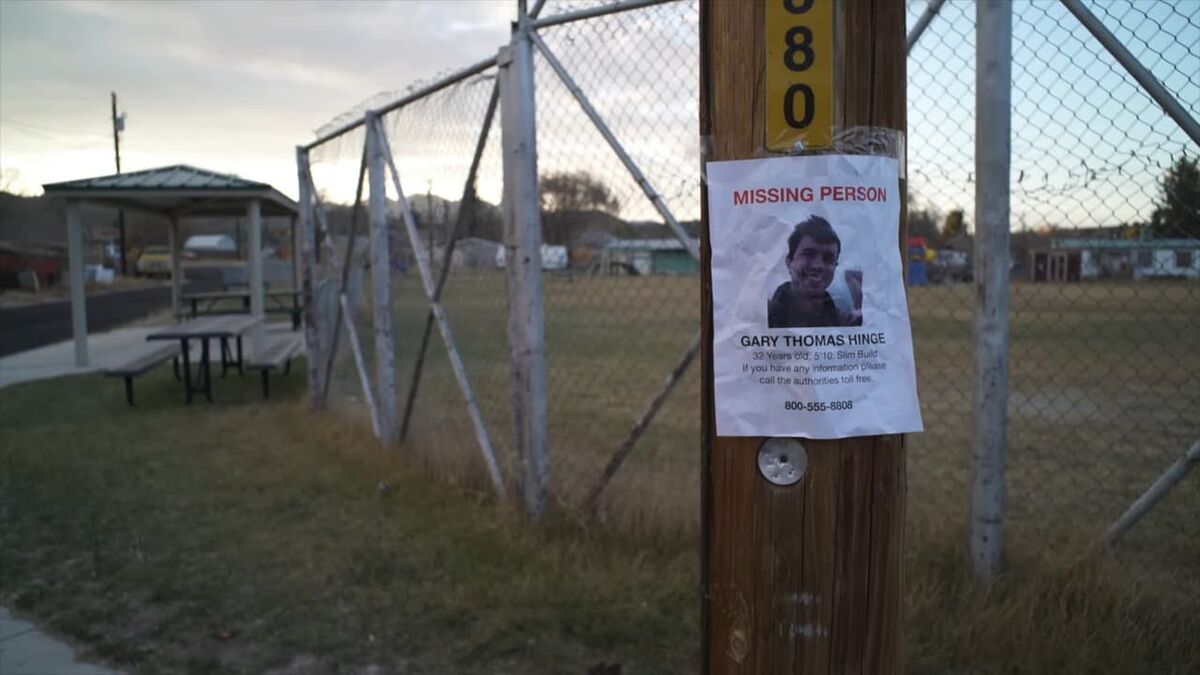Horror in the High Desert, an indie horror flick, came out in March of 2021. This pseudo-documentary incorporates the authenticity of true crime with the horror of found footage, all the while taking its inspiration for the plot from the real-life story of Kenny Veach. The movie revolves around the vaguely alarming missing person mystery of Gary Hinge in the vast empty desert of Nevada, and in order to move the plot along utilizes interviews of those closely familiar with the case combined with intermittent short videos recorded by Gary himself.
The story starts off with clips of interviews by Gary’s sister and roommate— Beverly and Simon— to first introduce you to Gary; and eventually adds Gal Roberts and William “Bill” Salreno into its cast of characters. The reporter and the PI each act as a sign for public interest and personal anxious concern respectively, and expand upon the solemnity of the storyline. The film spends most of its run time building upon its foreboding mysterious angle, and once it has cemented its place into realism it delves right into grotesque horror. The entire thing culminates into the final 15 minutes of a notably nightmare-inducing climax that records the last minutes of the protagonist’s life.
Gary Hinge, a friendly outdoorsy survival enthusiast, comes across an uncanny little cabin in the middle of nowhere during one of his regular hikes through the desert. When an impending sense of dread takes over Gary, he quickly flees from the site. Troubled and unsettled by this encounter he decides to share it on his online blog to his large number of followers. What follows is a swarm of hostile comments either discrediting his claim as a whole or demanding further proof. In an attempt to legitimize himself, Gary goes back out into the desert in search of that cabin, this time with the intention of recording it. There, he finds a strange man— presumably the owner of the creepy cabin— who ends up hacking off Gary’s hand and eventually kills him.
Much of the genre-appropriate cinematic weight of the movie is carried by its ending. The initial mysterious narrative of the story entirely depends upon this very ending for closure and resolution, and ideally promises the answers to the viewer’s every question. Let’s examine some of the most persistent of them. SPOILERS AHEAD.
Horror in The High Desert Ending, Explained: Why Does Gary go Back to Find The Cabin?

As is the case with most horror movies, the most glaringly obvious question that the audience is left with by the end is that of the protagonist’s reasoning and motive behind their ultimate decision. Why does the woman go into the creepy attic of her old house? Why do the teenagers think it’s a good idea to spend a night in an allegedly haunted house? Why does Gary Hinge go back to find a cabin that had left him horror-stricken on his previous encounter with it?
Though the entirety of the movie takes place after Gary’s death, it still does an earnest job of establishing Gary’s character and personality through anecdotes and his own blog recordings. We find out early on that Gary had always been a private person who liked to keep to himself; preferring animals and nature to social settings and people in general. This secluded way of life suggests a sense of social rejection and isolation felt on Gary’s part. He’s not very good at making friends, and his eclectic interests and hobbies only further his feelings of otherness and separation. Later, we find out that Gary was in a relationship with a man, and neither his sister or roommate are shown to know anything about it. This implies that on top of feeling like a social outcast Gary was also in the closet at the same time. His community is described to be “small town” with not many visibly out gay people in it, and when Private Investigator Bill looks into the man Gary was in a relationship with, that man is reported to be terrified of being outed.
Being queer in an unsupportive and homophobic environment can be an incredibly lonely and alienating feeling. It makes people feel like social pariahs through no inherent fault of their own. All of this, of course, culminates into severe and intense feelings of social exclusion for Gary. However, Gary’s blog presents an escape from all of this. His blog is pretty popular with fifty thousand followers, all of whom appreciate and engage with Gary’s interests and his quirks. It’s not much difficult to see why Gary would eventually come to rely on this source of social acceptance for his emotional fulfillment. He’s shown to have not told anyone from his actual life about any of this, which indicates his feelings of protectiveness over this facet of his life. The online community he has garnered is a place where he is accepted and liked. And so when it’s that very same community that starts to turn on him, refusing to believe his claims, accusing him of dishonesty and fake stories it starts to severely impact him.
He is desperate for the cyberbullying to stop and for his online community to go back to the way it was. A safe haven for him to practice and showcase his interests in return for enthusiastic support. An argument could be made for his own curiosity about the cabin weaseling its way into his motives, however, in the video uploaded on his blog he is terrified and visibly uncomfortable with the idea of going back to the cabin. Still, he does it, because at the end of the day peer pressure can be a damning tool.
Who Was The Man in The Woods?
The ultimate catalyst for Gary’s gruesome demise— the man in the woods— is only introduced in the last moments of the film. The narrative completely counts on this man to deliver on all the horrifying promises that are so far set up by the plot. The cabin emits a sense of imminent dread, there is danger within the desert— a horror— that doesn’t want to be found. It’s the reason behind the existence of this whole pseudo-documentary; everything quite literally rides on this man’s final reveal. And in the end, he’s disclosed to be just a violent man with physical deformities.
It’s not unusual for the horror genre to make use of disfigured abnormalities as the ultimate punchline to their scary setups. However, relying on the audience’s impulsive fear, rooted in ableism, to fill in the blanks for the writing is hardly groundbreaking storytelling. Nothing is known about this man, his identity or his incentives because the movie doesn’t deem those things necessary for its storytelling. All the audience seemingly has to know is that he’s a scary looking man with violent tendencies. Admittedly, it’s not the most satisfying of conclusions, narratively, but at the end of the day it does its job of him being just the personification of one long jump scare for the audience.
Why Does The Killer Leave Gary’s Backpack at The Campsite?

The killer’s lack of character or any hint of identity withstanding, one thing that the movie does make clear about him is that he wants to be left alone. Whatever his reasons or his techniques may be, the one thing he is prepared to ensure is his complete isolation from society at large. We’re never told how he knows a car works in order to drive it out to a second location to mislead anyone who might look into Gary’s disappearance, and we’re never told why he leaves the camera inside of Gary’s backpack. Still, the question of why he leaves the backpack itself behind— with Gary’s severed hand inside of it— is one of the only questions about the man that are explicitly answered in the text. It’s a warning sign. A threat. A reminder of what will happen to anyone else who tries to seek him out.
The ending of the movie ultimately acts as a cautionary tale against the unknown. Perhaps it is a commentary on the invasive nature of today’s online world, or just further proof of the story’s unwillingness to provide any firm stances on the killer. Regardless, by the end of this movie, the audience is too busy recovering from the blood curling, dreadful ending that they simply don’t have the time to wonder about it.


You must be logged in to post a comment.